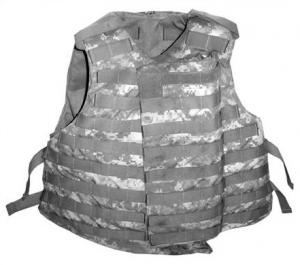World Military Encyclopedia
> United States
> Ballistic Protection
> Bulletproof Vests
> US-AV-00009

IBA (Interceptor Multi-Threat Body Armor System )
Casual:

Eastern Military District Patch, Armed Forces of the Republic of Uzbekistan
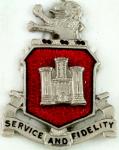
113th Engineer battalion

118th MP company 503rd MP bn 16th MP bde
To change information
Other versions
Note: this item only covers the core (OTV)of the IBA system
overview:
Weight:
OTV: 8.4lbs (3.8Kg)
OTV+ESAPI plates: 16.4 lbs (7.4 Kg)
Ballistic coverage:
OTV- front and back of the torso,Upper abdominal region, sides, and front of abdomin
SAPI/ESAPI plates- front and back of lung and heart region
ESBI side plates- sides of the upper abdominal region
NIJ level:
OTV- II (2) (shrapnel fragments and multiple rounds of 124-grain 9x19 FMJ)
ISBI plates- IIIa (3a) (multiple rounds of 124-grain 9x19 FMJ and most plus-P handgun ammuniton)
SAPI- III (3) ( 147-grain 7.62x51 (mil-spec. .308) M80 ball /FMJ )
ESAPI plates- IV (4) ( 150-grain 7.62x63 ( .30-06 Springfield ) M2 armor piercing )
Designed: April 1998
Used: early 2000 to early 2010s
Accessory(s): Interceptor additional components, and MOLLE system components
Variant(s): none
Cost per unit:
OTV- $500
ESAPI- $600 per plate
Technical Description:
The OTV is the base of the IBA or Interceptor Body Armor system, OTV or (O)uter (T)actical (V)est is a cover that contains the standard kevlar inserts, front and rear plates, and side plates the kevlar inserts made of KM2 kevlar fibers and is designed to act as a flack jacket similar to the PASGT system vest. The cover portion holds the front, back, and side plates as well as attachment points for load-bearing equipment. Load bearing equipment is attached via wide straps sewn into the front and rear of the cover these straps are used to attach MOLLE pouches and accessories. SAPI, ESAPI, and ISBI plates are held in pockets built inside the OTV. SAPI and ESAPI plates are positioned on the front and back to cover the user's lungs and heart while the ISBI covers the user sides. The OTV cover comes in most modern camouflages but was mainly produced in M81 woodland, coyote tan, tri-color DBDU, UCP, and Afghan police grey.
History:
The IBA was designed by DARPA in the late 1990s to replace the aging PASGT and ISAPI vests and a contract for production was awarded to Point blank body armor by the U.S. Army Soldier Systems Center or CCDC. The IBA was announced on April 13th of 1998. during this time the contract was changed and the company responsible for producing the vest was one based in Oakland Park, Florida under a five-year contract was established in July of the same year production then started the following year. the vests were first issued to troops in early 2000. During its service, it received many upgrades that increased its effectiveness and protective qualities (see ¨Interceptor additional components¨ for more information ) before being replaced by the IOTV in 2007, however, it remained in service for some years before the IOTV was in wide use by US forces and still serves in the US Navy and US army reserves.
overview:
Weight:
OTV: 8.4lbs (3.8Kg)
OTV+ESAPI plates: 16.4 lbs (7.4 Kg)
Ballistic coverage:
OTV- front and back of the torso,Upper abdominal region, sides, and front of abdomin
SAPI/ESAPI plates- front and back of lung and heart region
ESBI side plates- sides of the upper abdominal region
NIJ level:
OTV- II (2) (shrapnel fragments and multiple rounds of 124-grain 9x19 FMJ)
ISBI plates- IIIa (3a) (multiple rounds of 124-grain 9x19 FMJ and most plus-P handgun ammuniton)
SAPI- III (3) ( 147-grain 7.62x51 (mil-spec. .308) M80 ball /FMJ )
ESAPI plates- IV (4) ( 150-grain 7.62x63 ( .30-06 Springfield ) M2 armor piercing )
Designed: April 1998
Used: early 2000 to early 2010s
Accessory(s): Interceptor additional components, and MOLLE system components
Variant(s): none
Cost per unit:
OTV- $500
ESAPI- $600 per plate
Technical Description:
The OTV is the base of the IBA or Interceptor Body Armor system, OTV or (O)uter (T)actical (V)est is a cover that contains the standard kevlar inserts, front and rear plates, and side plates the kevlar inserts made of KM2 kevlar fibers and is designed to act as a flack jacket similar to the PASGT system vest. The cover portion holds the front, back, and side plates as well as attachment points for load-bearing equipment. Load bearing equipment is attached via wide straps sewn into the front and rear of the cover these straps are used to attach MOLLE pouches and accessories. SAPI, ESAPI, and ISBI plates are held in pockets built inside the OTV. SAPI and ESAPI plates are positioned on the front and back to cover the user's lungs and heart while the ISBI covers the user sides. The OTV cover comes in most modern camouflages but was mainly produced in M81 woodland, coyote tan, tri-color DBDU, UCP, and Afghan police grey.
History:
The IBA was designed by DARPA in the late 1990s to replace the aging PASGT and ISAPI vests and a contract for production was awarded to Point blank body armor by the U.S. Army Soldier Systems Center or CCDC. The IBA was announced on April 13th of 1998. during this time the contract was changed and the company responsible for producing the vest was one based in Oakland Park, Florida under a five-year contract was established in July of the same year production then started the following year. the vests were first issued to troops in early 2000. During its service, it received many upgrades that increased its effectiveness and protective qualities (see ¨Interceptor additional components¨ for more information ) before being replaced by the IOTV in 2007, however, it remained in service for some years before the IOTV was in wide use by US forces and still serves in the US Navy and US army reserves.
Another category of: Bulletproof Vests
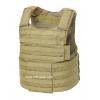 Eagle Industries CIRAS land
Eagle Industries CIRAS land
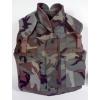 PASGT system combat vest (manufactured by Gibraltar Industries)
PASGT system combat vest (manufactured by Gibraltar Industries)
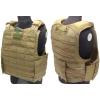 Eagle Industries CIRAS maritime
Eagle Industries CIRAS maritime
 Eagle Industries CIRAS land
Eagle Industries CIRAS land
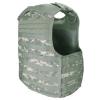 Condor ACU Quick Release Plate Carrier. US Armed Forces
Condor ACU Quick Release Plate Carrier. US Armed Forces

